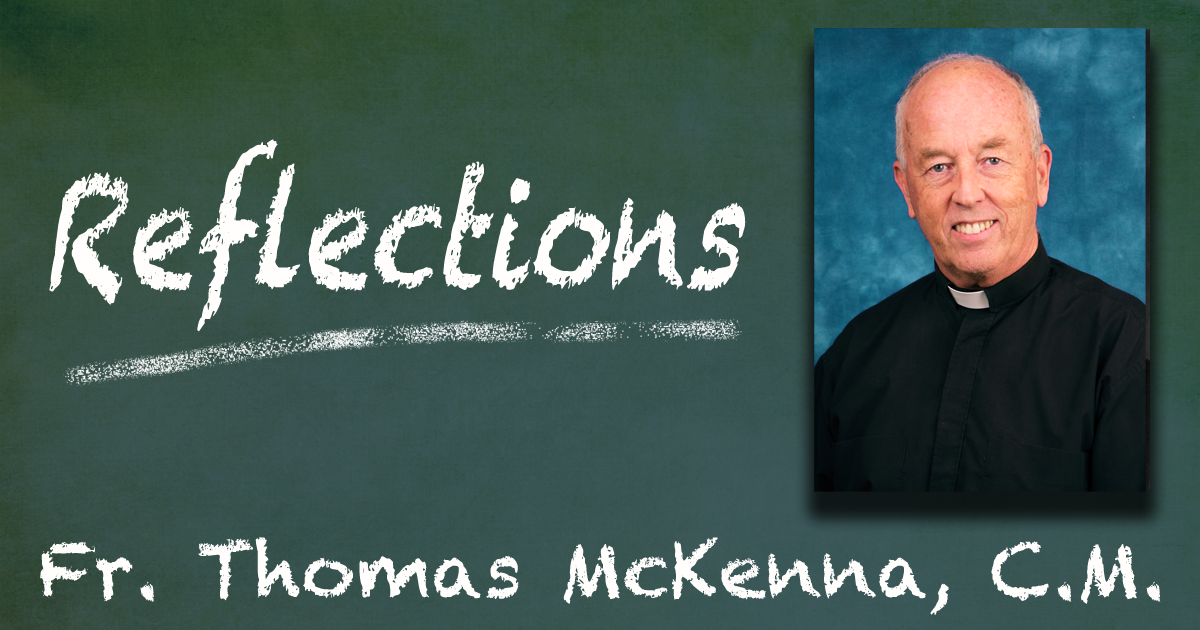
St. Louise: Moving Toward Love (Is. 58: Mt. 25)
There’s a famous quote attributed to Mark Twain:
When I was a boy of fourteen, my father was so ignorant I could hardly stand to have the old man around. But when I got to be twenty-one, I was astonished at how much he had learned in seven years.
I use it as an example of the growth that can happen over time in relationships, especially close ones. The things you thought you were basing your relationship on change, in the sense that you can discover a different depth and meaning to them as time moves on and circumstances change. And as this foundation deepens and widens, so does your appreciation of who the other person really is – as well as your ways of communicating with her or him.
Isn’t this the case in our relationship with God? Right from the beginning, we’re told to love God. But in those earlier times, the relationship acknowledges love, but doesn’t really center on it. It revolves more around awe, respect, and often enough the fear and trembling that arises from that.
The scene that makes this vivid for me is the unforgettable one at the gates of the city of Oz. Dorothy and the others are standing there when the voice thunders out from behind the curtain. Dorothy’s face turns to terror, the cowardly lion falls down and puts his tail in his mouth and you can hear the tin man’s knees knocking together. Fear and trembling. It’s a memorable portrayal of what you might call first reactions to the Almightiness of God.
At such time, the question instinctively presents itself: “How do I get and stay on God’s good side? What does He want me to do?” One overall answer is to Obey.
“I admire You God and am trying hard to love You. But I’m also overwhelmed by Your greatness, especially compared to my littleness. And so, what is it Lord You’d have us do?”
One of the answers to this question has been religious observances; e.g., worship and dietary regulations and singing and sacrificing and temple building. And in our readings, fasting – and not just any fasting but the kind of that serves others. Yahweh says, “These are the things you are to do to please me, the glorious God of the universe.” In sum, God commands and I obey. And that’s the fundamental stance out of which I relate to God.
But can relationships grow? Can the basis of rapport with God move and deepen? Can it shift so as to be somewhere a little closer and more true to the real heart of the relationship?
There’s one of these paths of growth (and deepening) I’d hold up on St. Louise’s newly dated feast (May 9th). And that is, her journey toward God as she went along. I’m referring to the one that went from “how do I please God by doing what God wants?” over to “How do I respond to the love of God I see all around me around (and in) me?” This is the story of how she moved from “I do this out of obedience to God” to “I do all this because my heart is responding to all the love from God I experience coming at me, especially in the people around me.”
In language more recognizable to us, she grew in her ability to “see Christ in the other,” especially in the individual who was poor. More to the point, she grew in her ability to love The Lord Jesus Christ in the person of the other. She moved from a response more centered on obedience to God’s will over to one that circled around the love of God she saw being poured out in the world through the Spirit of Jesus.
We’re not talking so much about her having a mystical vision of Jesus every time she came in contact with another, particularly a man or woman living in poverty. Rather hers was a gradual coming into contact with the lovability of people and responding to that as a shining-through of God’s own love.
You might say when she was younger, she revered God as much as she loved God. As she grew, the scales tilted over to the love-side of the relationship. It was God’s loveableness more than God’s omnipotence that she saw. It was the love of God poured out into her world rather than the power of God there that she was most deeply responding to.
To return to the beginning. As with Mark Twain in his growth of appreciation for who his Father was, so with Louise in her relationship to her All Loving Lord. She came to be able to locate that relationship in a deeper ground, see it more accurately for what it was – and as we know so well, to have it overflow into genuine, persevering and effective love for her neighbor in whom she came to see the love of God being poured out into the world. She grew more and more familiar with the very experience Jesus claims and points to in Matthew 25. “In feeding them, you’re feeding me. In loving them, you’re loving me.”
The contrast between two visuals can capture this movement over the course of her life.
The one is that trembling scene from Oz where the question “What do you want me to do, God?” predominates. How can I obey you, Lord?
The other is in a recently circulated cartoon of the servant kneeling before the poor man, and seeing behind him the shadow of Jesus’ cross. She kneels before both the homeless man and the symbol of the love of the suffering Lord, permeating and surrounding this scene. “How can I love you, Lord? How can I see and love you in your people, Lord?”







0 Comments